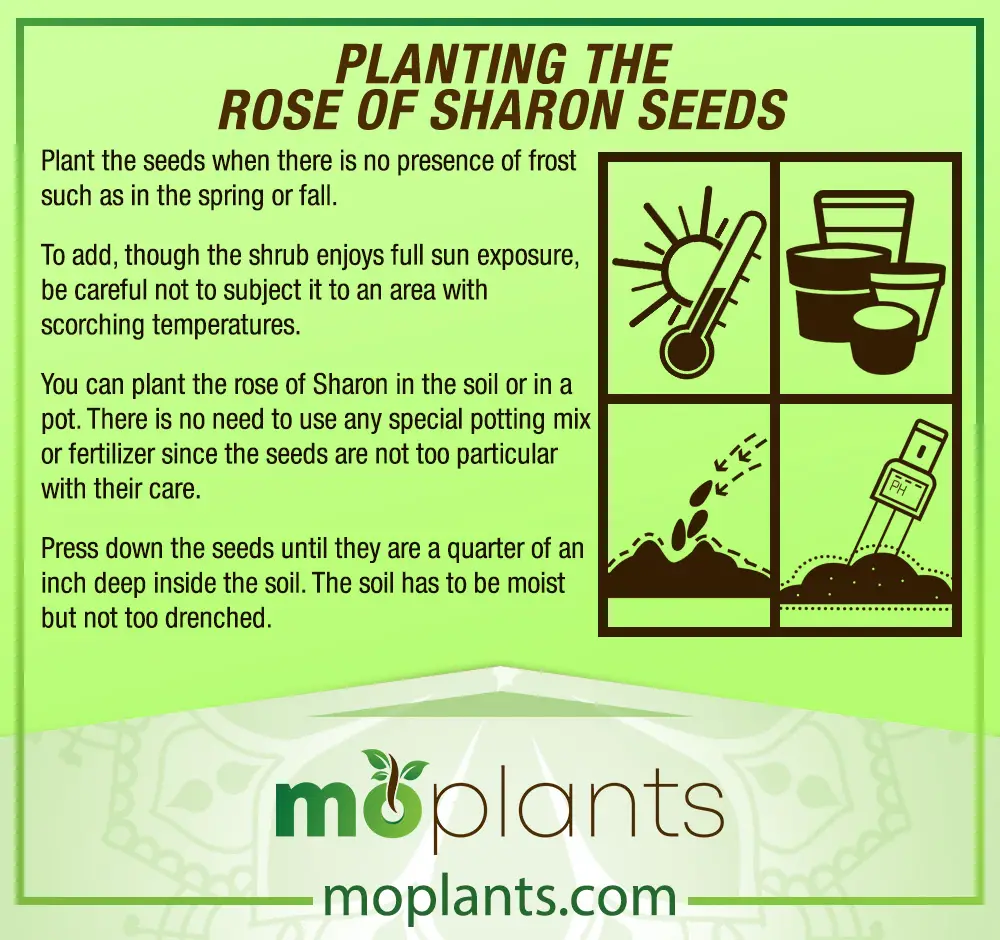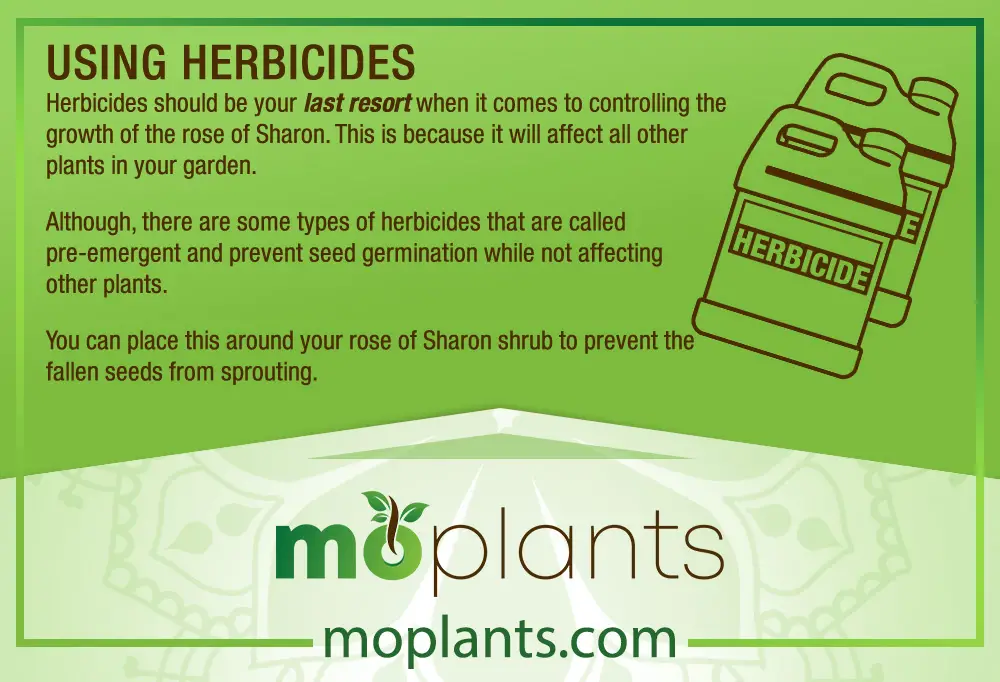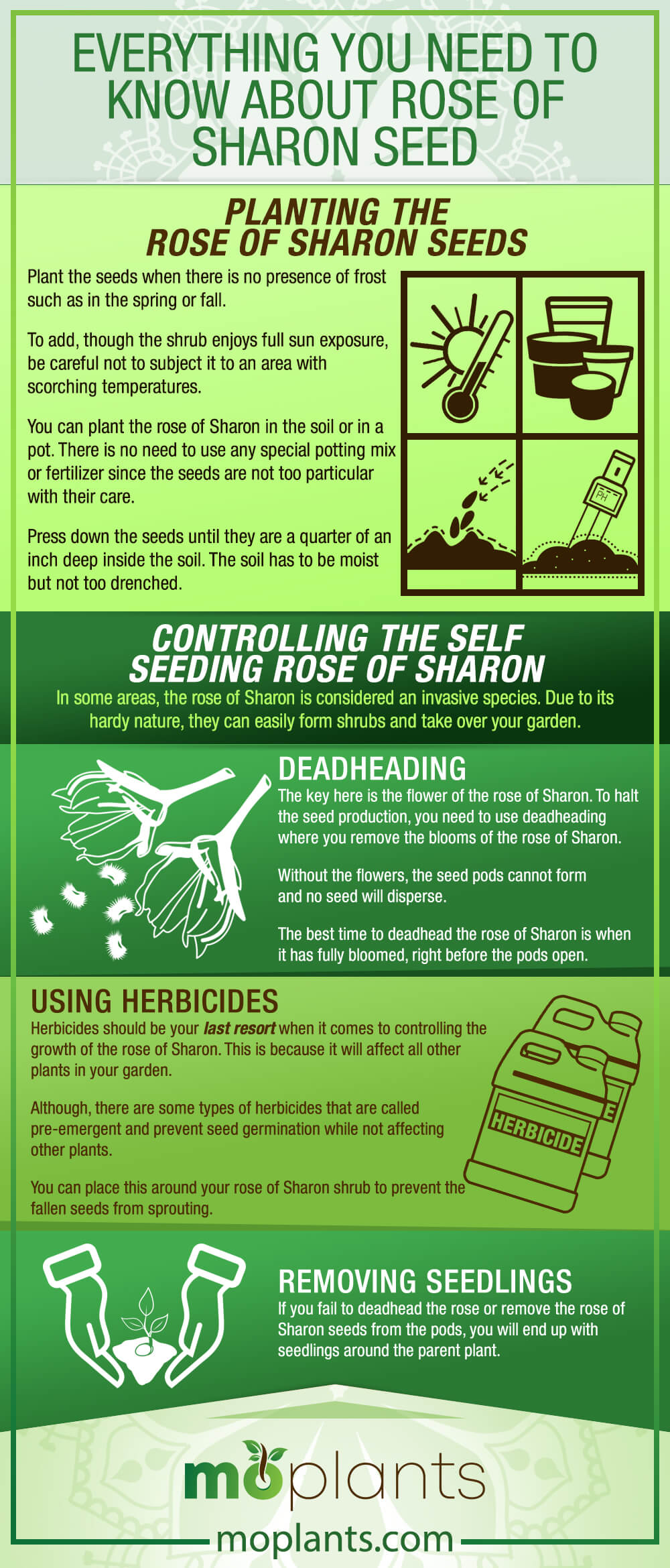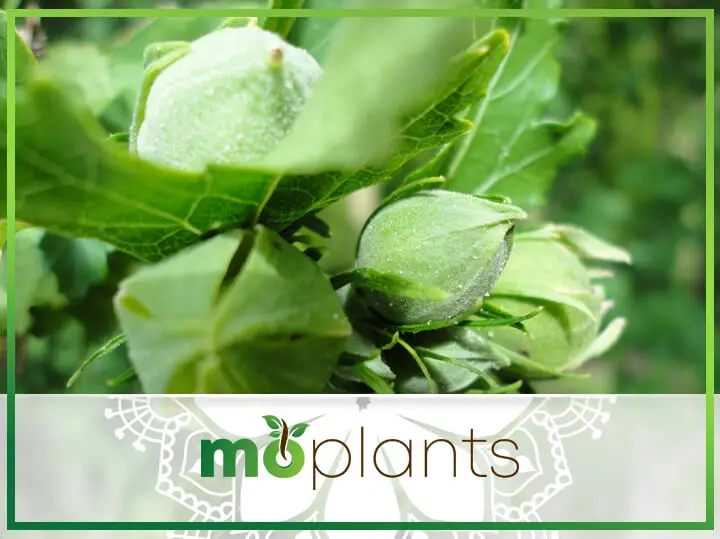You can find rose of Sharon seed pods near their flowers. The rose of Sharon or Hibiscus syriacus bears three to five seeds in each of its five lobes during winter.
Are you interested in growing rose of Sharon seeds? Or maybe you’re looking to find a solution to a problem with pesky seedlings?
Depending on your goal, the rose of Sharon can be a hardy addition to your garden or become invasive new plants. It all lies in how you deal with its seed pods before they break open.
Information on the Rose of Sharon Seed
You don’t need a lot of experience growing rose of Sharon, nor in or getting rid of the plant.
This variety of hibiscus flowers generally blooms in zones 5 of the United States Department of Agriculture’s Hardiness Zone Map, though the shrub has been reported to grow in areas higher than zones 5 as well.
The rose of Sharon prefers being out in gardens with full sun on moist and acidic soil. You can expect the flowers to come in a variety of colors such as white, red, pink, and purple.
If you already have rose of Sharon where you want them, growing more is as simple as letting the seedpods ripen and disperse seeds on their own.
In winter, the seed pod ripens, turning brown and dry before splitting open to reveal the seeds inside. These seeds then fall near the parent plant and sprout next spring, creating the beginnings of a shrub.
However, some varieties of rose of Sharon do not produce seeds.
Moreover, there is no guarantee that the seedling will be the same variety as the parent plant. This is due to the possibility that the parent is a hybrid.
Harvesting Rose of Sharon Seeds
You may want to save a rose of Sharon seed or two for later planting. On the other hand, you may have to protect the seeds from getting eaten by hungry birds.
If so, you can harvest seeds easily by wrapping a paper or nylon bag around the seed pod in autumn or early winter. Once the pods open, the paper bag will be there to catch the rose of Sharon seed.
Another way is to pick the seedpods once they’ve turned brown. But take note that if you harvest them too early, the seed pods might not ripen or produce usable seeds.
To ensure success using this method of harvesting, you must have a good idea of how the Sharon seeds develop:
- First, search for a shrub and observe the seed pods in October. They are still green and are three-quarters of an inch long. Leave the pods to dry until they become brown in color.
- Once brown, pluck the dry seed pods which look like they’re starting to open at the seam.
- You then have to continue to dry them indoors for two days. Afterwards, you can split the open over a flat surface to obtain the seeds.
Preserving Your Rose of Sharon Seeds
Once you have your rose of Sharon seeds, store them in a cool, dry location inside an envelope or paper bag.
To ensure that no moisture gets in, place some rice or a paper towel with them to help absorb excess moisture.
You can also store seeds in the refrigerator by placing the seeds in a jar.
This type of container helps keep out the moisture caused by condensation. For this method, you don’t need to add rice or a paper towel.
It is a good idea to label the seeds so you know which seed was harvested earlier since they only last for about a year in this state.
Planting the Rose of Sharon Seeds
Plant the seeds when there is no presence of frost such as in the spring or fall.
To add, though the shrub enjoys full sun exposure, be careful not to subject it to an area with scorching temperatures.
You can plant the rose of Sharon in the soil or in a pot. There is no need to use any special potting mix or fertilizer since the seeds are not too particular with their care.
Press down the seeds until they are a quarter of an inch deep inside the soil. The soil has to be moist but not too drenched.

Controlling the Self Seeding Rose of Sharon
In some areas, the rose of Sharon is considered an invasive species. Due to its hardy nature, they can easily form shrubs and take over your garden.
Deadheading
The key here is the flower of the rose of Sharon. To halt the seed production, you need to use deadheading where you remove the blooms of the rose of Sharon.
Without the flowers, the seed pods cannot form and no seed will disperse.
The best time to deadhead the rose of Sharon is when it has fully bloomed, right before the pods open.

Using Herbicides
Herbicides should be your last resort when it comes to controlling the growth of the rose of Sharon. This is because it will affect all other plants in your garden.
Although, there are some types of herbicides that are called pre-emergent and prevent seed germination while not affecting other plants.
You can place this around your rose of Sharon shrub to prevent the fallen seeds from sprouting.

Removing Seedlings
If you fail to deadhead the rose or remove the rose of Sharon seeds from the pods, you will end up with seedlings around the parent plant.
1. Manual Removal
The best way to remove the seedlings is by good, old pulling. It’s the most environment-friendly means of removal, despite its difficulty and more time-consuming nature.
The larger seedlings with their long roots are the hardest to remove while smaller ones are easier to spot.
2. Smothering Seedlings
Another method of removal is by depriving the seedlings of any air and sunlight. You do this by covering them up with cardboard, newspaper, plastic sheets, or a tarp.
The technique will also affect other plants in the soil so be careful as you lay the sheets out. To cover up the material, you can spread mulch or wood chips to hide it.
3. Herbicide for Seedlings
Herbicides are another means of killing the seedlings. As mentioned previously, these should be a last resort since you may end up unintentionally killing your other plants.
The technique is to apply the herbicide on the leaves of the seedlings, then leave them to die out. Avoid using a spray since it can accidentally hit neighboring plants.

Infographic

Final Thoughts
The rose of Sharon or the Hibiscus syriacus is a beautiful yet tough self-seeding plant that can be both a blessing and a curse for the gardeners out there who live in the zones where they grow.
The best way to manage their seed propagation is to understand how these rose of Sharon seeds become new plants.
It is also helpful to gather more information on whether these shrubs are invasive to your area before considering growing them.
For any questions, feel free to leave them in the comments.

